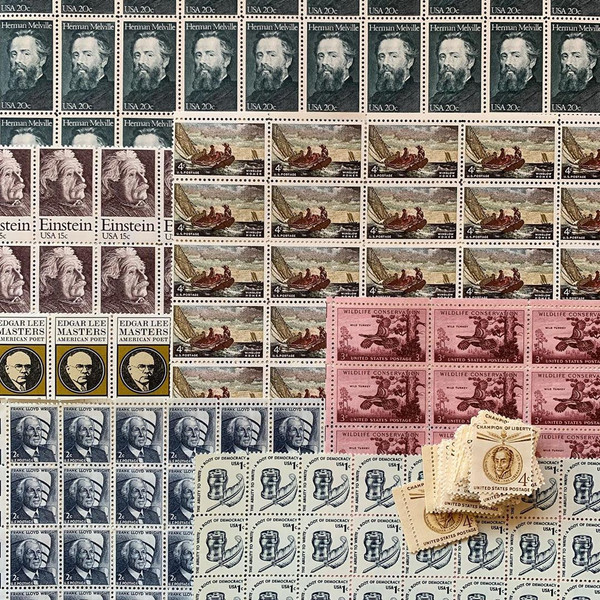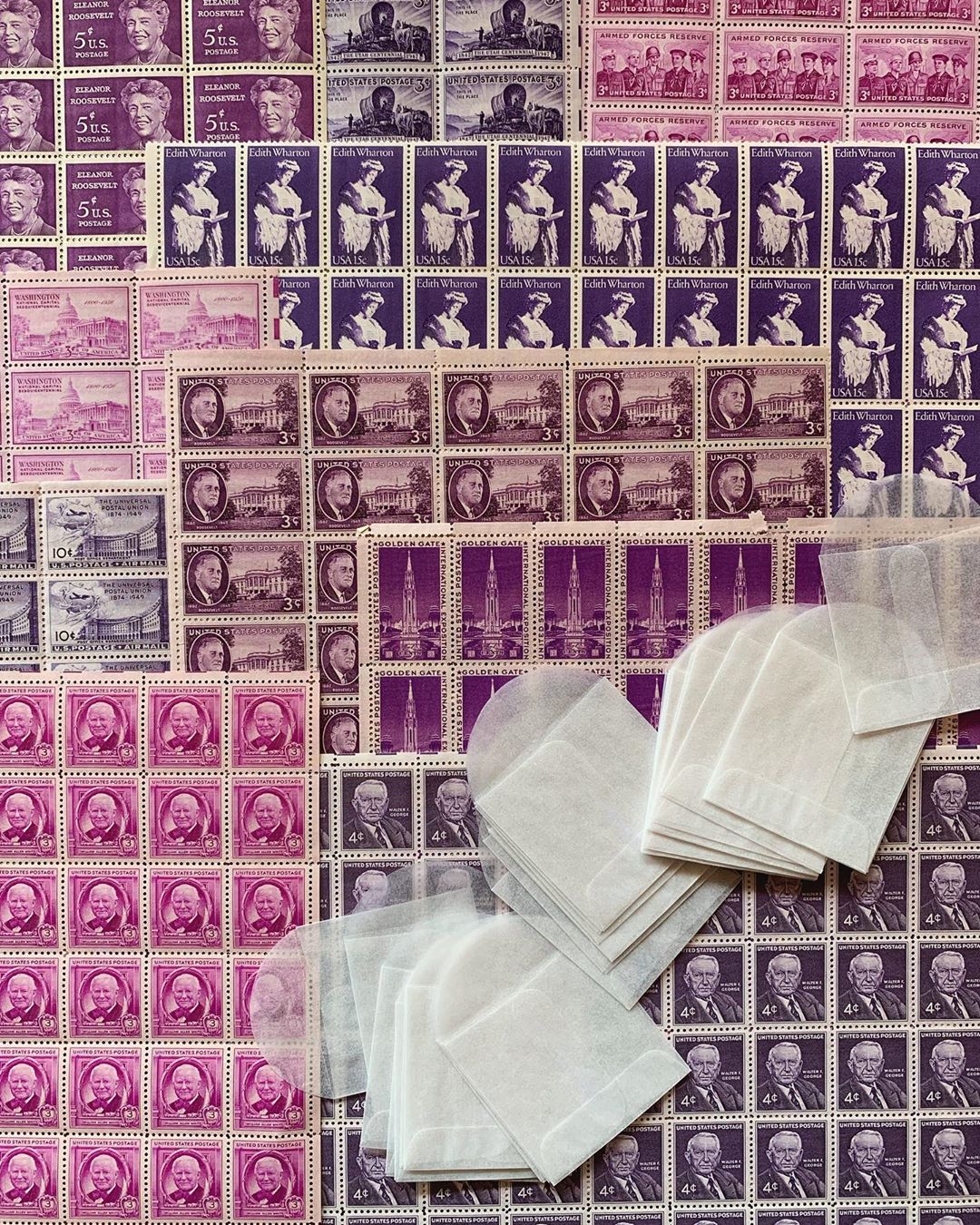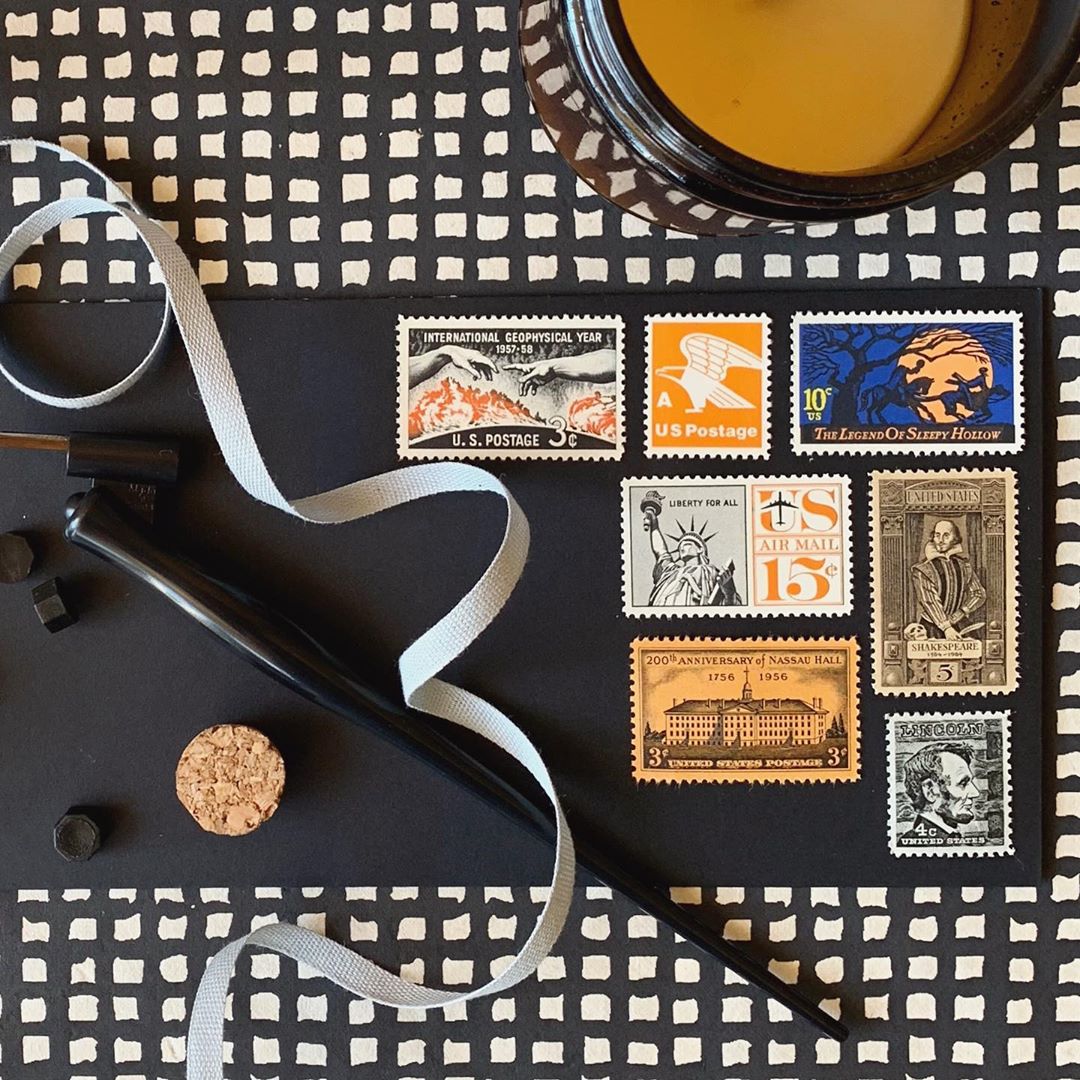The Great Postage Puzzle
2nd Oct 2019
Growing up, my brother and sister and I would play a game that only rural, bored-out-of-their-brains kids could dream up. It was called Puzzle Factory, and the basic premise was that we completed puzzles for clients. Magically, we had multiple clients at any given time commissioning us to build a puzzle for them. Please refrain from asking why—there is not a logical answer to any question you could pose about this pastime. Anyway, because we had so many clients, we naturally had multiple puzzles going simultaneously, and we each worked on one or two at once. Three on the floor, a couple on the ping pong table. My mom was a huge fan of this game, as you might imagine.
That was all fine and good until... the phone rang. What’s that? One of our clients needed their puzzle stat?! Like in an hour? Could we finish? Since customer service was our number one priority, we stammered out a yes and then all converged onto the puzzle in question. Now the pressure was on and the stakes were high: this was a puzzle emergency, and we needed to deliver.
Did I mention there weren’t too many things going on in the country?
My point here is that I had what one might call an Olympic level of training in the sport of puzzle completion. And I still do puzzles with my family any time a holiday or vacation rolls around. However, I have come to realize that my obsession with stamp arrangements is also an outgrowth of this peculiar brand of training.
Although not a typical puzzle, I have several governing “rules” when selecting stamps for a collection, and the action of fulfilling each of those rules with a particular grouping of stamps is a puzzle for certain.
The color palette has to be harmonious and dreamy. This is obviously subjective, but I want each stamp to have some relationship to the others through color. Sometimes that means monochromatic sets. Sometimes that means having an "anchor" stamp from which I draw out a number of colors. Sometimes that means an overarching color scheme, like a rainbow of solids. Whatever approach I take for a given collection, I want the palette to create a powerful and distinctive mood.
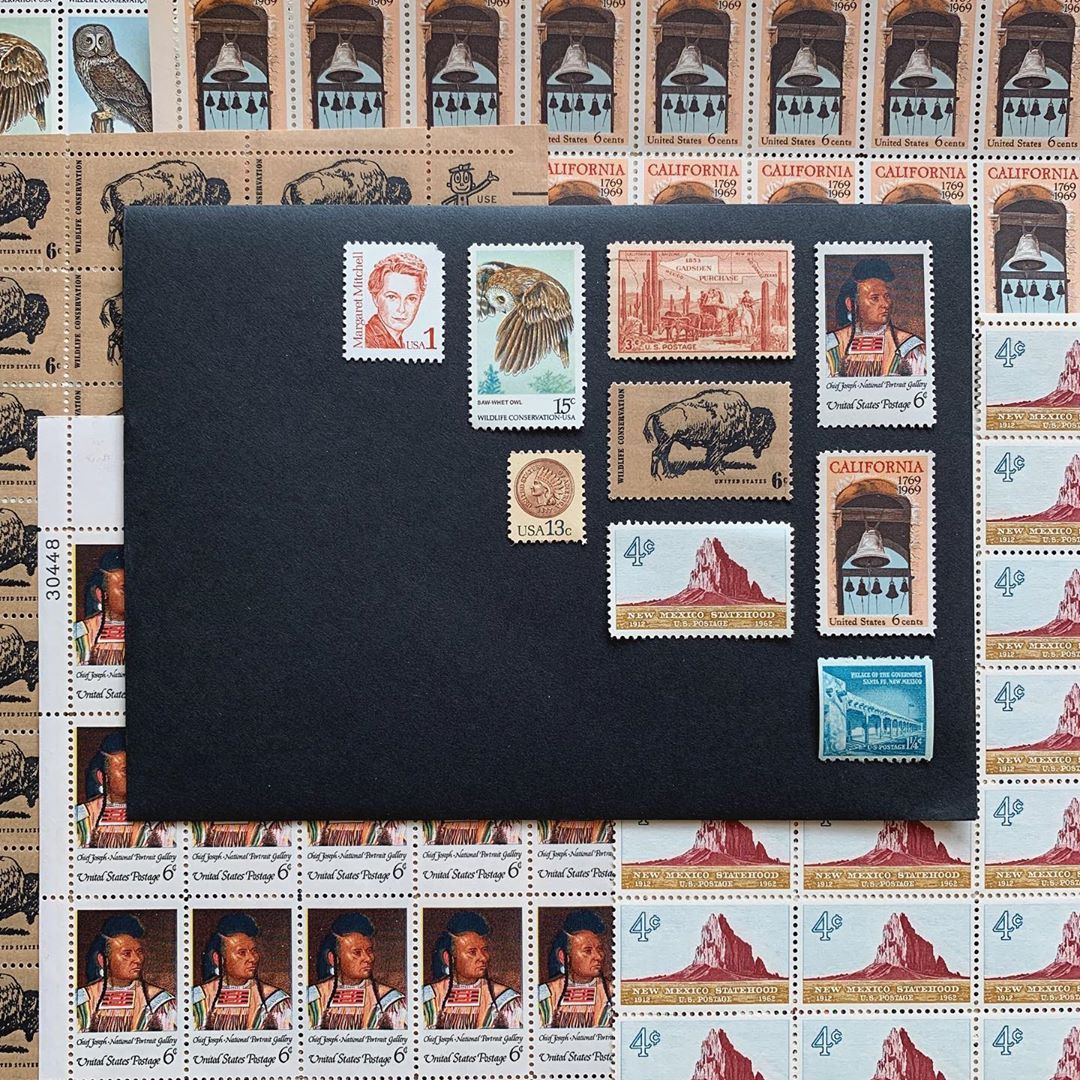
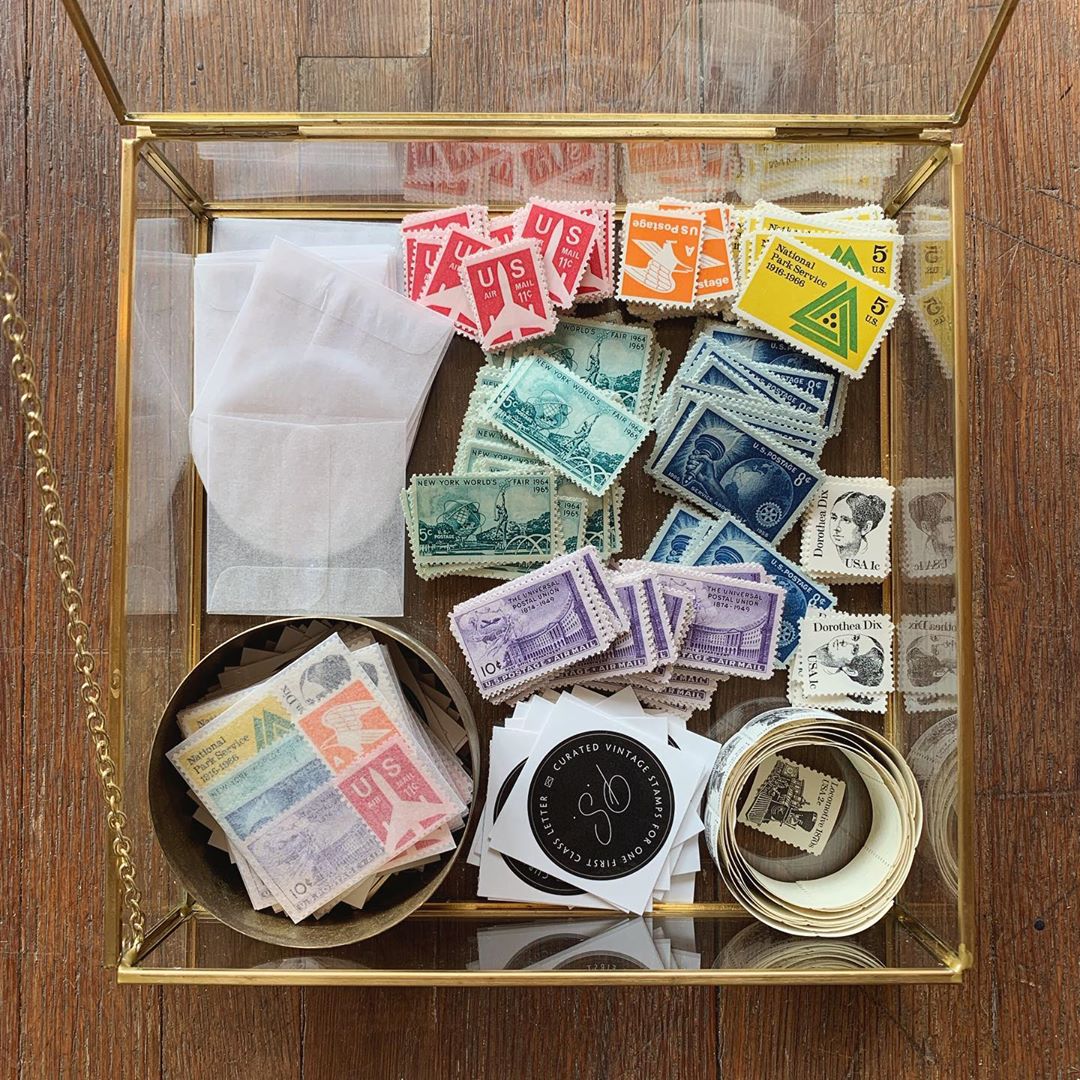
Although it is not a strict necessity, I generally strive to develop a thematic underpinning to the collection. Color takes precedence for me, but if I can start to pull out topical relationships in addition to color, that just makes the collection come alive. And often the themes are what customers are specifically interested in.
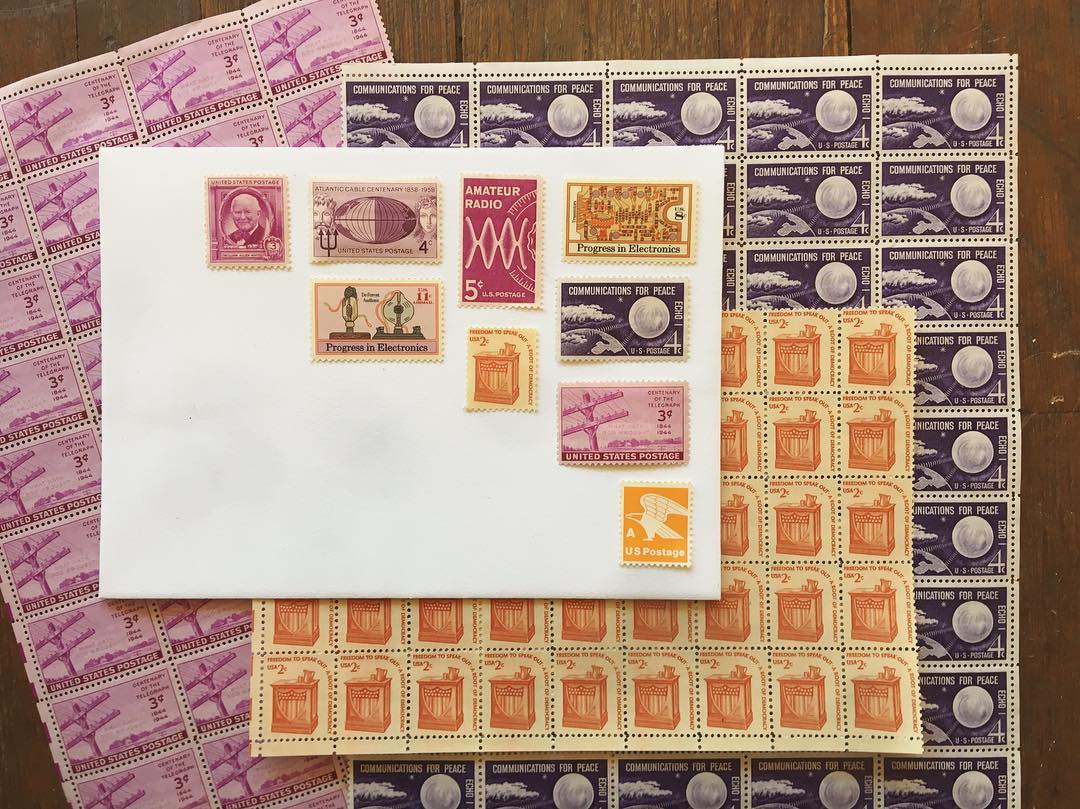
The shape the stamps make on the envelope has to be aesthetically pleasing to me. There are obviously a huge number of permutations of stamp arrangements for any given collection, but I think it helps add a lot of visual interest when there are stamps in both portrait and landscape orientations, along with some smaller sizes. I personally like to begin them traditionally in the upper right hand corner and then fan out both directions from there, leaving an even margin of negative space in the channels running in between. And I like for any variability in color to bounce around a bit to pull the eye along.
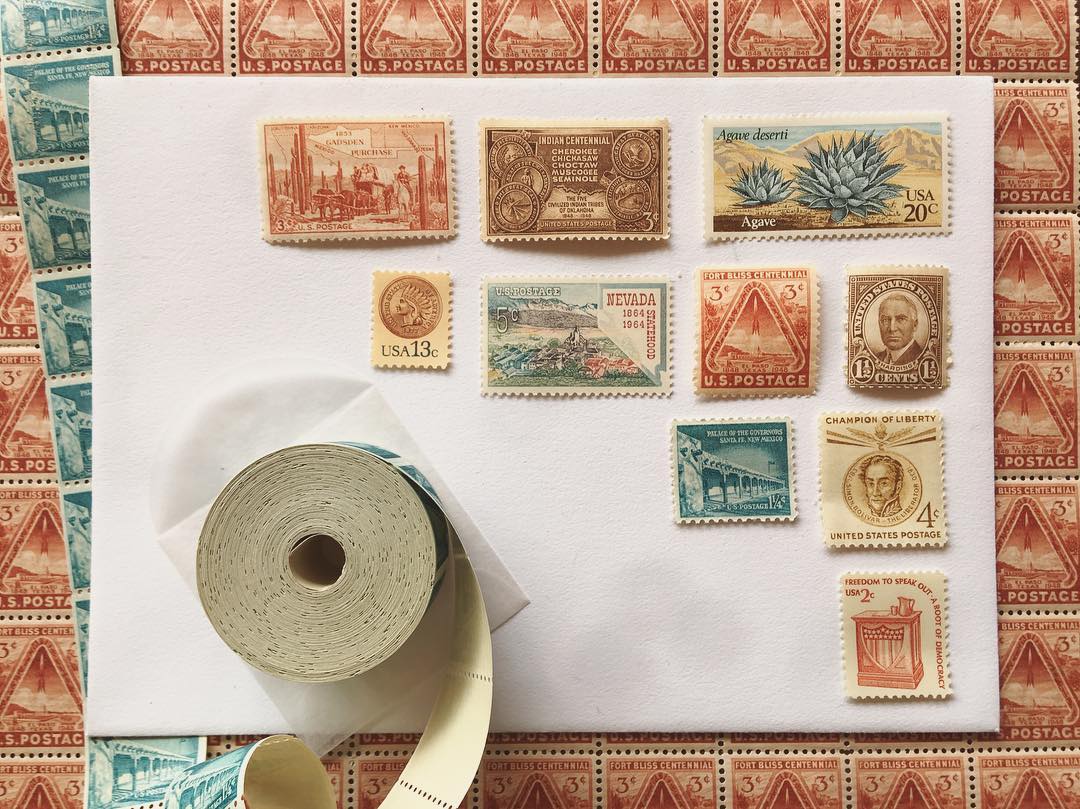
In an ideal world, the total of the stamps would hit the current postage rate spot on. That can be quite difficult without a hefty stash of one and two cent stamps, so I don’t mind going over the rate by a couple of cents when necessary. But hitting 55 cents exactly fills me with indescribable glee. Kind of like finishing a puzzle for a client within the designated hour deadline.
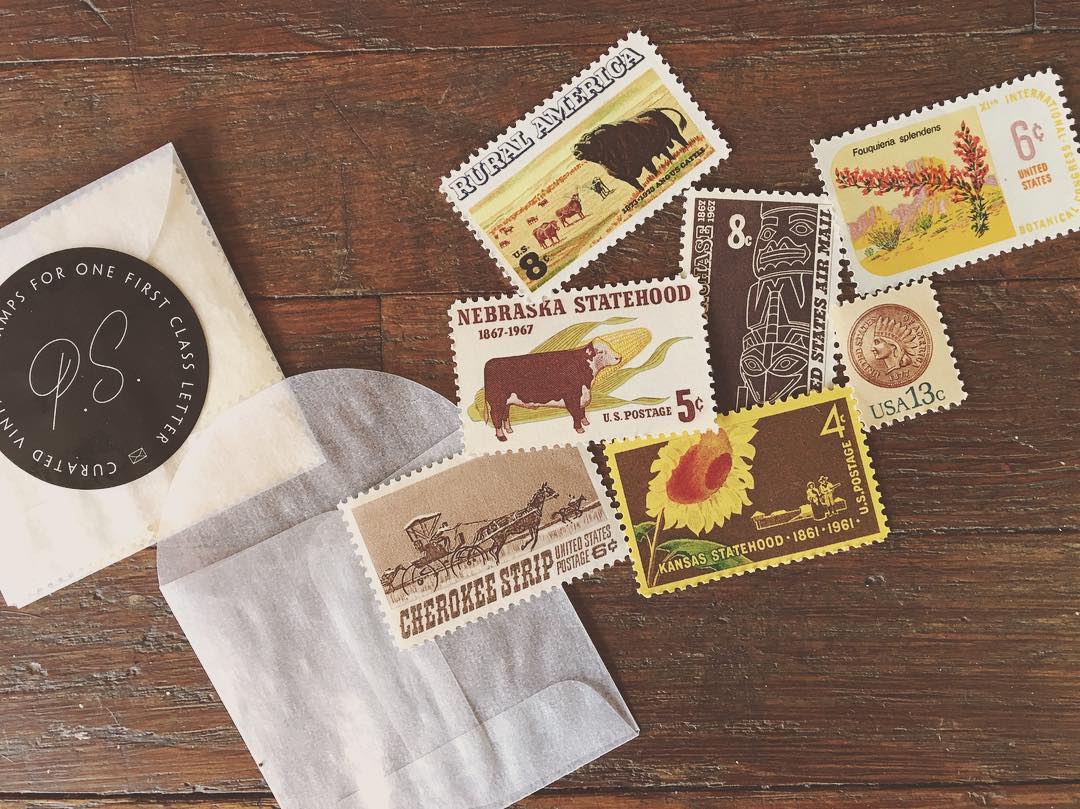
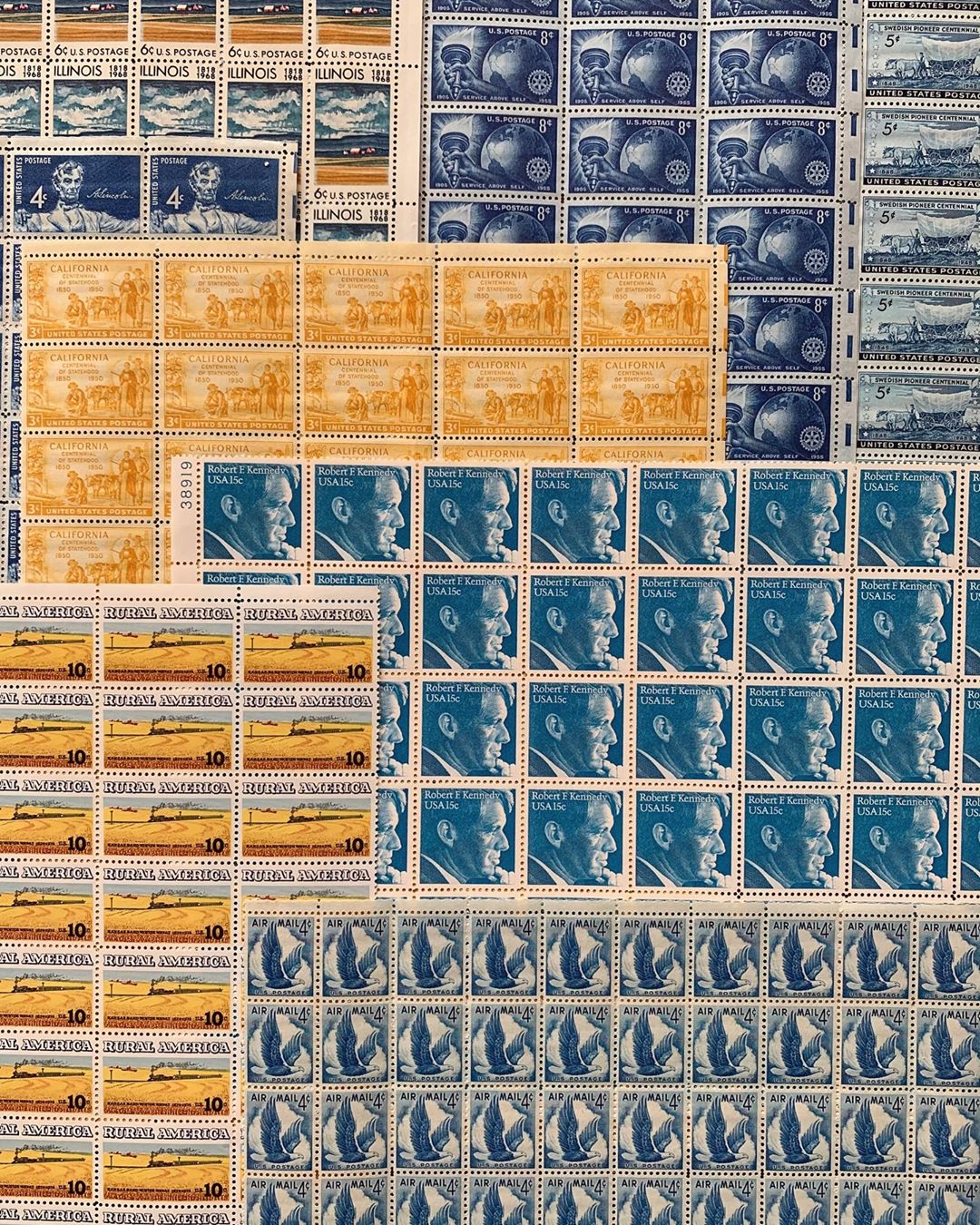
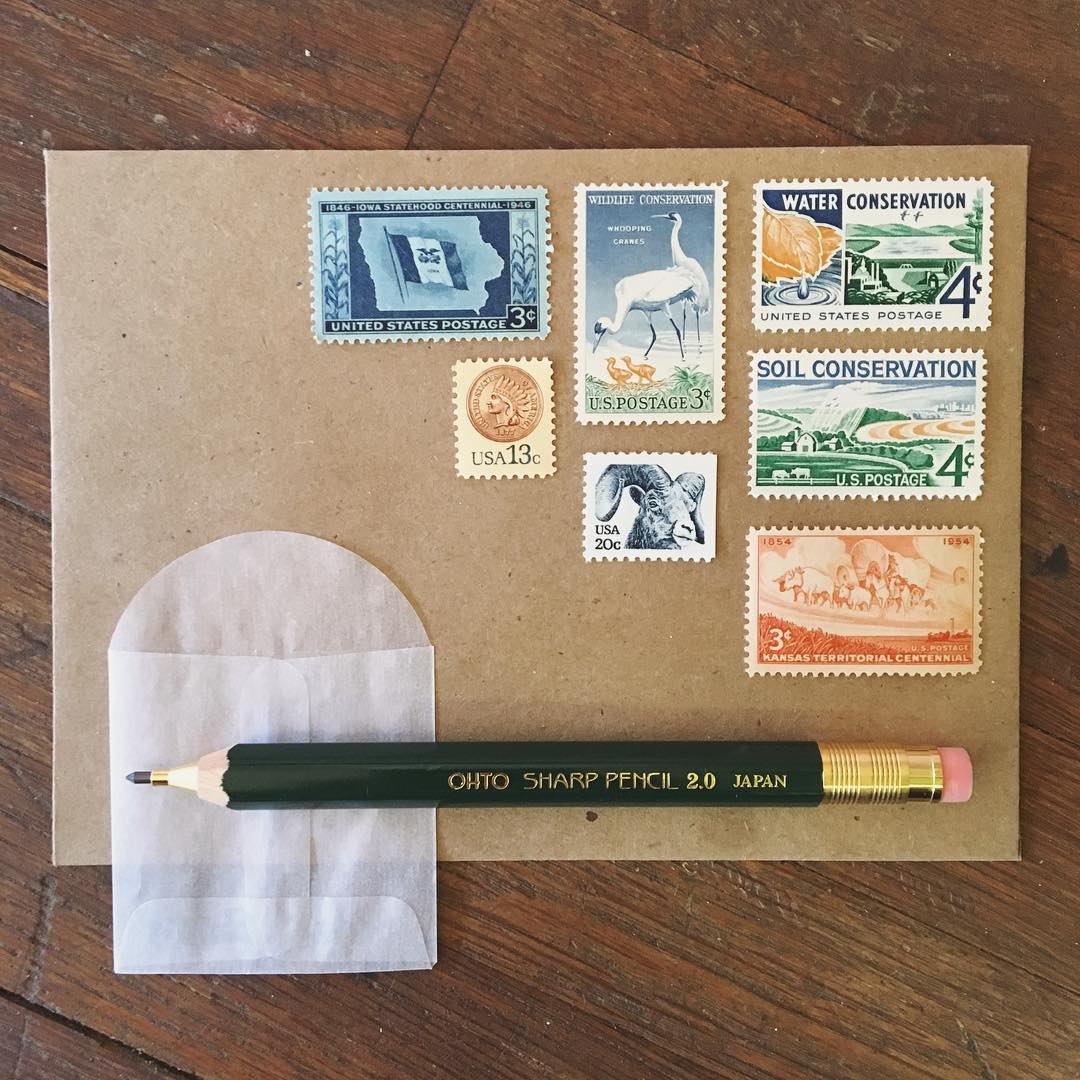
The final piece of the puzzle is tucking them into their glassine envelopes just so. That, too, is often a small design problem to work out so that the overall color palette is clear and a fragment of each stamp is visible. And once they’re all curated and snug and just waiting for the right envelope to come along, I find them to be the sweetest packets filled with pure happiness.
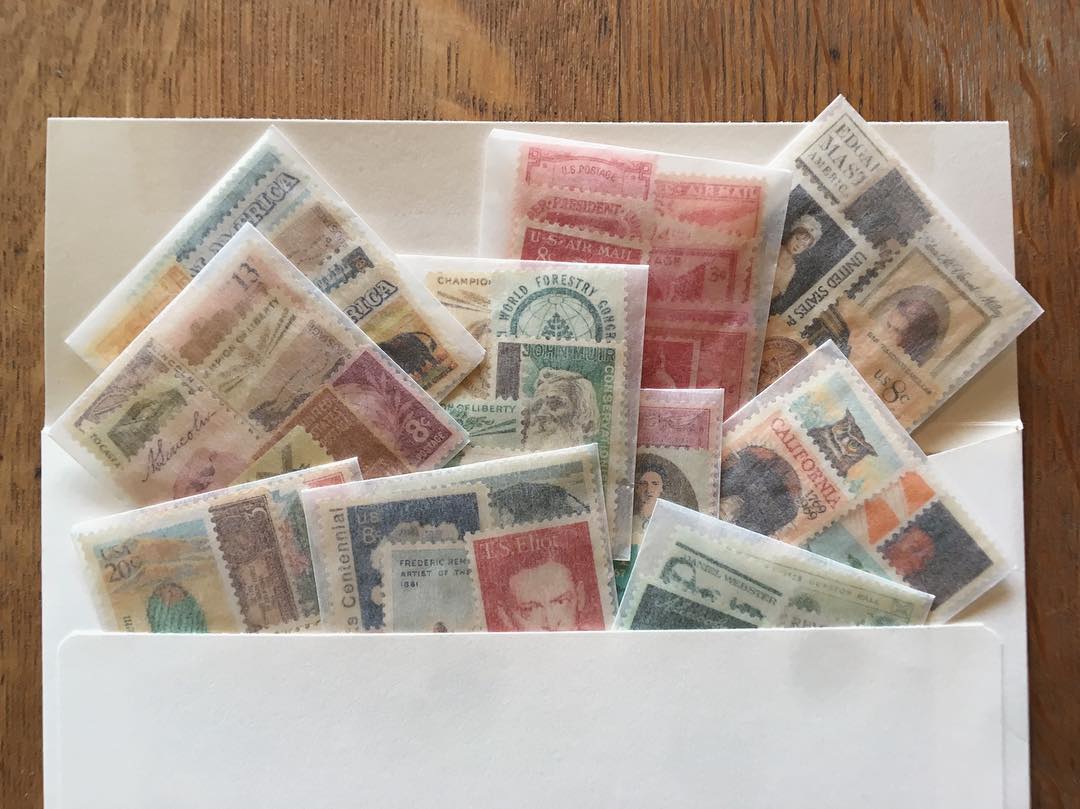
I recognize that this is an odd obsession, and frankly, I can’t say it even makes much sense over the long haul, given that vintage stamps are a finite resource. Also that the process is time-consuming, between attending stamp shows, curating collections, tearing down the sheets, and assembling packets of sometimes up to ten or eleven stamps one at a time. Furthermore, you have to be ready for the rates to change annually, which makes it unwise to put too many packets together at once. Finally, the margins are quite slim after you account for all the time, even at $3 for 55 cents worth of postage.
Indeed, there is not a logical answer to most any question you could pose about this pastime. But country kids develop a strange sense of fun, and can I help it if that’s what I remain at heart?

